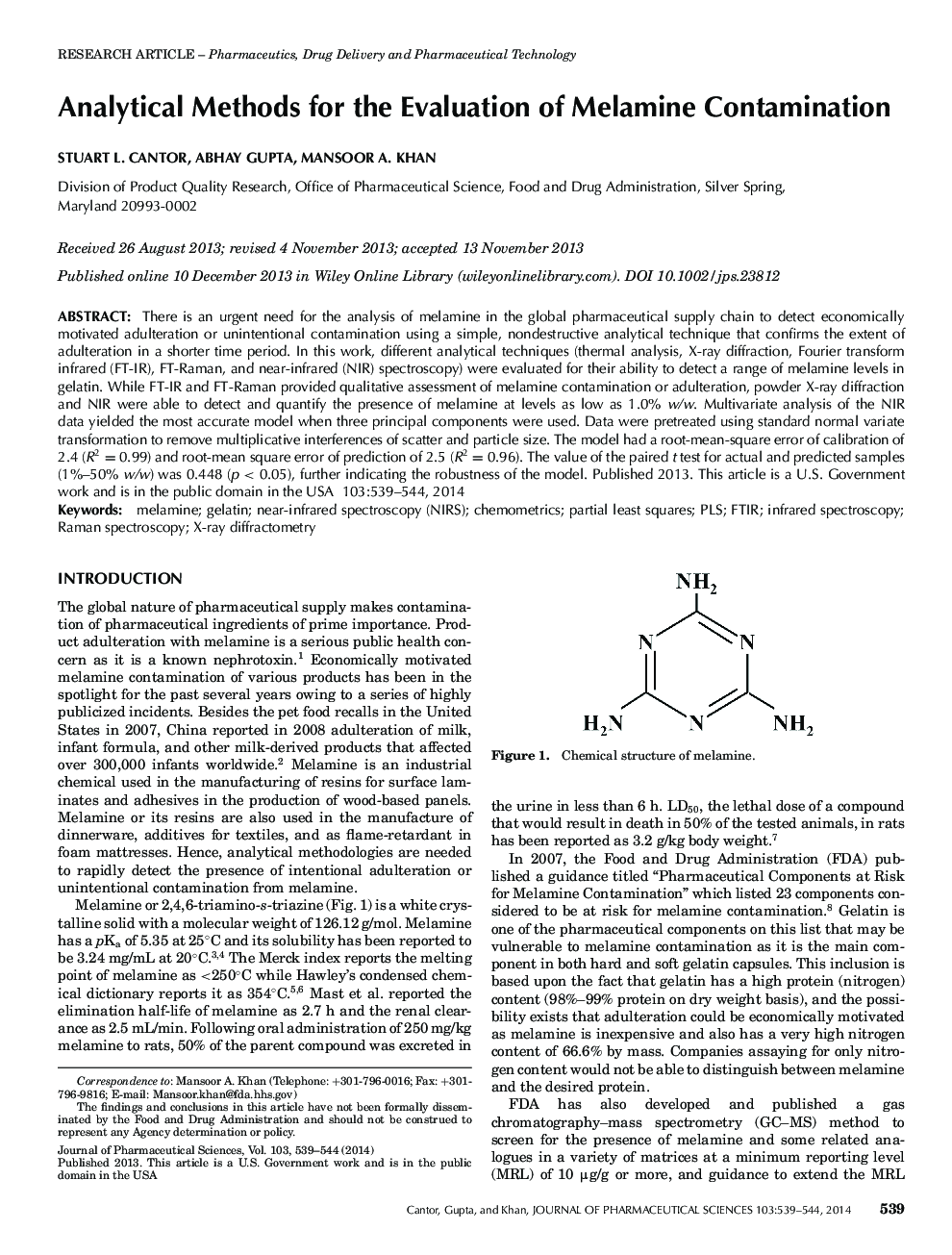| Article ID | Journal | Published Year | Pages | File Type |
|---|---|---|---|---|
| 10162600 | Journal of Pharmaceutical Sciences | 2014 | 6 Pages |
Abstract
There is an urgent need for the analysis of melamine in the global pharmaceutical supply chain to detect economically motivated adulteration or unintentional contamination using a simple, nondestructive analytical technique that confirms the extent of adulteration in a shorter time period. In this work, different analytical techniques (thermal analysis, Xâray diffraction, Fourier transform infrared (FTâIR), FTâRaman, and nearâinfrared (NIR) spectroscopy) were evaluated for their ability to detect a range of melamine levels in gelatin. While FTâIR and FTâRaman provided qualitative assessment of melamine contamination or adulteration, powder Xâray diffraction and NIR were able to detect and quantify the presence of melamine at levels as low as 1.0% w/w. Multivariate analysis of the NIR data yielded the most accurate model when three principal components were used. Data were pretreated using standard normal variate transformation to remove multiplicative interferences of scatter and particle size. The model had a rootâmeanâsquare error of calibration of 2.4 (R2 = 0.99) and rootâmean square error of prediction of 2.5 (R2 = 0.96). The value of the paired t test for actual and predicted samples (1%-50% w/w) was 0.448 (p < 0.05), further indicating the robustness of the model. Published 2013. This article is a U.S. Government work and is in the public domain in the USA 103:539-544, 2014
Keywords
Related Topics
Health Sciences
Pharmacology, Toxicology and Pharmaceutical Science
Drug Discovery
Authors
Stuart L. Cantor, Abhay Gupta, Mansoor A. Khan,
